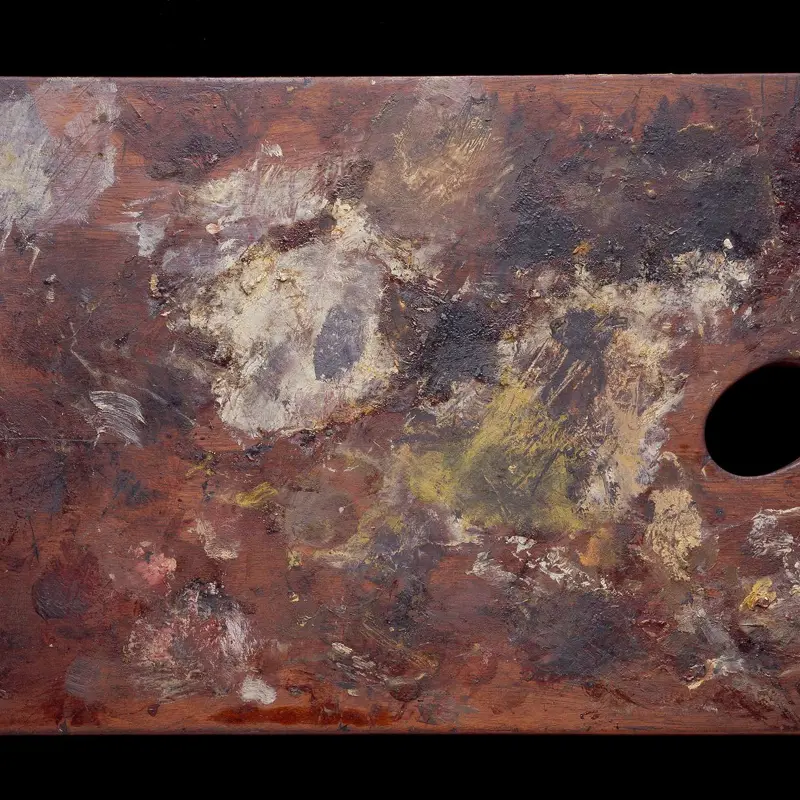John Constable, 'Stratford Mill', 1820
About the work
Overview
Stratford Mill was the second of the six monumental paintings of the Stour landscape Constable exhibited at the Royal Academy between 1819 and 1825, a group that includes The Hay Wain (National Gallery, London).
Stratford Mill was a water-powered paper mill (now demolished) on the River Stour near East Bergholt, Suffolk. Constable shows the mill in shadow, while shafts of sunlight play between the trees beside the meandering river. A dying willow leans over the glassy water and we glimpse a distant sunlit farmhouse. A girl watches a boy cast his fishing line into the water, and it looks as though the angler to their left has just got a bite.
After Constable’s death, the painting became known as ‘The Young Waltonians’, a reference to Izaak Walton’s book on fishing, The Compleat Angler, published in 1653.
Key facts
Details
- Full title
- Stratford Mill
- Artist
- John Constable
- Artist dates
- 1776 - 1837
- Date made
- 1820
- Medium and support
- oil on canvas
- Dimensions
- 127 × 182.9 cm
- Acquisition credit
- Presented to the National Gallery under the acceptance-in-lieu procedure, 1987
- Inventory number
- NG6510
- Location
- Not on display
- Collection
- Main Collection
- Frame
- 19th-century English Frame
Provenance
Additional information
Text extracted from the ‘Provenance’ section of the catalogue entry in Judy Egerton, ‘National Gallery Catalogues: The British Paintings’, London 2000; for further information, see the full catalogue entry.
Exhibition history
-
2023Masterpieces from the National GalleryShanghai Art Museum East17 January 2023 - 7 May 2023National Museum of Korea2 June 2023 - 9 October 2023Hong Kong Palace Museum22 November 2023 - 11 April 2024Chimei Museum2 May 2024 - 1 September 2024
Bibliography
-
1934Royal Academy of Arts, Exhibition of British Art (exh. cat., Royal Academy of Arts, 6 January 61934 - 10 March 1934), London 1934
-
1976A. Smart and A. Brooks, Constable and His Country, London 1976
-
1982G. Reynolds, 'Stratford Mill by John Constable Ra', Art at Auction: The Year at Sotheby's, 1983, pp. 48-53
-
1983M. Rosenthal, Constable: The Painter and His Landscape, New Haven 1983
-
1986M. Cormack, 'Constable's Stratford Mill', in J. Wilmerding (ed.), Essays in Honor of Paul Mellon, Washington 1986, pp. 71-83
-
1988National Gallery, The National Gallery Report: January 1985 - December 1987, London 1988
-
1991J.C. Ivy, Constable and the Critics, 1802-1837, Woodbridge 1991
-
1991L. Parris and I. Fleming-Williams, Constable, (exh. cat. Tate Gallery, 13 June - 15 September 1991), London 1991
-
1994I. Fleming-Williams et al., Constable: A Master Draughtsman (exh. cat. Dulwich Picture Gallery, 13 July - 16 October 1994), London 1994
-
1998J. Egerton, The British School, London 1998
-
2000Egerton, Judy, National Gallery Catalogues: The British Paintings, revised edn, London 2000
-
2001
C. Baker and T. Henry, The National Gallery: Complete Illustrated Catalogue, London 2001
About this record
If you know more about this work or have spotted an error, please contact us. Please note that exhibition histories are listed from 2009 onwards. Bibliographies may not be complete; more comprehensive information is available in the National Gallery Library.







